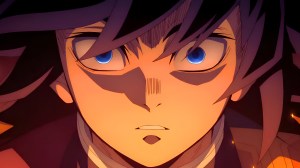Following its release on PlayStation 4, Xbox One and Windows on Tuesday, clips of glitches, faulty character models and subpar graphics from WWE 2K20 have flooded social media. According to several players who bought the PS4 version of the game, Sony has been granting refunds to customers who are unsatisfied with the product. There’s no word yet if Microsoft will choose to do the same for the Xbox One and PC versions. While WWE 2K20 is the seventh installment under the 2K banner, its the first to be made solely by Visual Concepts without the assistance of Japanese game developer Yuke’s.
Videos by ComicBook.com
Twitter user @kingkhristen uploaded a step-by-step video of how customers can request a refund, then showed proof of the refund via a PayPal receipt.
go hit up https://t.co/bR16wPn9ez pic.twitter.com/lohI6JuzMg
— chocolate starfish (@kingkhristen) October 22, 2019
Other players soon followed suit.
Seriously took me about 2 minutes. https://t.co/Flnmmj03lI pic.twitter.com/doDRv2owuk
— Friday Night TapDown (@wiretap804) October 22, 2019
“Sony just granted me refund for WWE 2k20. The gameplay is awful,” one customer wrote.
It’s worth noting that other customers were denied refunds, though they did not disclose why there claims were rejected.
@PlayStation So I tried to get a refund for WWE 2k20, since is super broken, customer support told me no refund, playstation is not the producer of the faulty game…..but still distribute it for 120$ a pop.#WhatASkam #FixWWE2K20
— Pheel Perrier (@PhilPerrier) October 23, 2019
By Tuesday morning the hashtag #FixWWE2K20 began trending as numerous funny videos of glitches began spreading around. One of the worst involved a character suddenly spinning around the ring in a never-ending loop, which Twitter users had some fun with.
https://t.co/fb5eRzpgqo pic.twitter.com/rnOBYrxfsh
— Maffewhausen (@Maffewgregg) October 23, 2019
In a recent interview with ComicBook.com, Visual Concepts creative director Lynell Jinks discussed the challenges the developers had of adapting each wrestlers’ likeness.
“When we got the license from THQ, we also got their archive and their assets,” Jinks said. “Luckily they were scanning through Gentle Giant from the early 2000s. Someone like Chyna, they had a scan from 2001 or 2002 or something like that, some early 2000s and we used that. It’s not a great scan, it’s not photogrammetry like we do with our current superstars, but it gave us a nice base, right? Then we had some really talented artists that will go in and fine-tune it and sculpt it and try to make it look as good as the photogrammetry that we never used. It’s always a challenge, and so you’re trying to compare something that comes from real-life images and scan data to something that an artist kind of creates, but I believe with time and now that we feel like all right, we kind of have a process down, we can get there. Again, we have some really talented artists that allow us to do that.”








